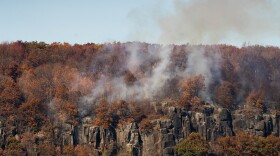In the 1990s, the Greenland Ice Sheet as well as the rest of the Arctic region were observed to be measurably thawing as a result of human-caused global warming. At that time, most of Antarctica’s vast ice cap seemed to be securely frozen. Conventional wisdom was that Antarctica’s ice sheets were going to remain stable and were not going to melt much.
The Antarctic ice sheet covers about 5.4 million square miles, an area larger than Europe. It averages more than a mile thick. In total, it contains 61% of all the fresh water on Earth. If it were all to melt, global sea levels would rise by about 190 feet. The smaller western portion of the ice sheet is especially vulnerable to warming and it alone could raise sea levels by more than 10 feet.
A new study by researchers at the Danish Meteorological Institute examined the accelerating ice melting in both the northern and southern polar regions. There have been early warning signs that the Antarctic was not as solidly frozen as thought. A rapid collapse of an ice shelf along the narrow Antarctic Peninsula in 2022 was quite unexpected. Scientists never thought such an event could happen.
The amount of ice that has entered the ocean has increased fourfold since the 1990s and is on the cusp of becoming a really big number. The new study concludes that Antarctica is not as isolated from the rest of the global climate system as once thought. Recent climate models and observations show that relatively warmer waters are starting to reach the base of the continent’s ice shelves.







